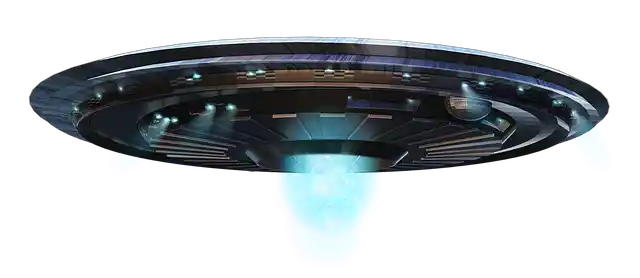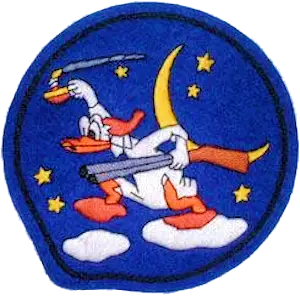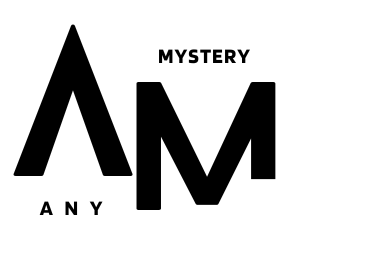Aircraft pilots coined the term Foo fighter to designate different UFOs or unusual aerial phenomena seen in the sky over the European and Pacific operations during WWII.
Though the phrase “foo fighter” initially characterized a type of UFO seen and designated by the United States 415th Night Fighter Squadron, it was also popularly used to refer to any UFO sighting from that period.

The Foo Fighter Sighting
These orbs were described in detail by pilots. These things were reported as hot and glowing red, white, or orange.
Several pilots reported them resembling Christmas tree lights, and they appeared to play with the aircraft, making unpredictable twists before disappearing.
The objects flew in formation with the aircraft and behaved as if they were under intelligent control but never demonstrated threatening behavior, according to the pilots and personnel.
They could not, however, be outmaneuvered or shot down. It wasn’t too far-fetched to blame Nazi Germany for the floating glowing orbs at the time. For one thing, the sightings occurred over Nazi-occupied Europe when Germany’s Luftwaffe was making incredible progress.

Lieutenant Fred Ringwald was the first to see it. He was an observer in a night fighter piloted by Lt. Ed Schlueter and radared by Lt. Donald J. Meiers. It was late November 1944, a partly cloudy evening with a quarter moon.
According to a 1945 American Legion Magazine article on the sightings, they were strolling the Rhine Valley just north of Strasbourg on the French-German border when Ringwald observed, I wonder what those lights are, over there in the hills.
There were eight or ten of them in a row, each shining a bright orange. Schlueter then noticed them off his right wing. They checked Allied ground radar, but nothing was detected. Schlueter turns the jet to battle, thinking the lights are German air weapons. Only to have the lights vanish.
Aftermath and Reporting of the Foo Fighter Incident
The Supreme Headquarters of Allied Expeditionary Force based in Paris issued a press release on December 13, 1944, which was published the next day in The New York Times, formally characterizing the occurrence as a new German weapon. The moniker “Foo Fighters” was used in subsequent reports in the New York Herald Tribune and the British Daily Telegraph.
Time magazine published an article headlined Foo Fighter in its January 15, 1945 issue, reporting that balls of fire had been following USAAF night fighters for nearly a month and that the pilots had nicknamed it the foo-fighter. According to time, the pilots’ reports of the phenomenon differed, but they all agreed that the unexplained lights followed them closely at great speed.

The “balls of fire” phenomenon described by the Pacific Theater of Operations differed from the foo fighters reported from Europe in that the “ball of fire” resembled a giant blazing orb that “simply hung in the sky.”
Still, it was occasionally observed to follow planes. The phenomenon was thought to be tied to the Japanese fire balloon campaign. No aircraft were reported to have been attacked by a “ball of fire,” as with European foo fighters.
On January 1, 1945, the Associated Press reported the news of the foo-fighter sightings, and ideas regarding their origins rapidly arose: The sightings were flares, weather balloons, or St. Elmo’s Fire—a severe weather phenomenon in which light emerges on the tops of objects.
All of those views, however, were rejected by the 415th. Flares and weather balloons can’t follow planes the way these devices do, plus they’d seen St. Elmo’s fire and could tell the difference.
Many of the anecdotes were told to Richard Ziebart, historian for the neighboring 417th Night Fighter Squadron, by 415th crew members: “The pilots were quite professional.” They gave the report, mentioned the lights, but did not speculate on them.” Even still, the pilots found the sights unsettling.
Robert C. Wilson, an Associated Press combat correspondent, celebrated New Year’s Eve with the 415th. His report of the foo fighters made the top pages of newspapers across the country the next day.

Other squadrons had seen them, but the 415th crew’s number, regularity, and impact, along with the fact that a reporter listened to the airmen, triggered an investigation into the sightings.
The Origin of the Term Foo Fighter
Donald J. Meiers, a radar operator of the 415th Night Fighter Squadron, created the phrase foo fighter in 1944. He was inspired by his favorite comic, Bill Holman’s famous Smokey Stover cartoons that appeared in the Chicago Tribune throughout the 1930s and 1970s. ‘Where there’s foo, there’s fire!’ was Stover’s mantra.
Because ‘foo’ was also shorthand for ‘FUBAR,’ a polite way of saying ‘effed up beyond all recognition,’ the name took on with the men in the police. As a result, ‘foo or ‘FU’ made sense as something insane or effed up.
It stuck, according to Ringwald, due to a lack of a better name. And this is what the guys of the 415th began calling these incidents: “f*****’ foo fighters.”
Bob Wilson, an Associated Press press correspondent in Paris, was assigned to the 415th at their base outside of Dijon, France, in December 1944 to investigate this story.
During this time, the term was simplified to “foo fighters.” Capt. Harold Augspurger, the squadron commander, likewise opted to sanitize the phrase “foo fighters” in the squadron’s historical data.

Were the Foo Fighters a German Secret Weapon?
In his essay ‘Intercept UFO,’ author Renato Vesco said that Foo fighters were a new German secret weapon, which was reprinted in a revised English form as ‘Man-Made UFOs: 50 Years of Suppression’ in 1994. Vesco claims that the foo fighters were a type of Feuerball ground-launched autonomously guided jet-propelled flak mine (Fireball).
The gadget, which was operated by special SS units, appeared to be shaped like a tortoise shell and flew using gas jets that spun like a Catherine wheel around the fuselage. The brilliant spheroid appearance of the foo fighters was formed by miniature klystron tubes inside the gadget in conjunction with the gas jets.
A rudimentary collision avoidance radar assured that the ship did not collide with another airborne item. An onboard sensor mechanism even instructed the machine to flee quickly if it was fired upon. According to Vesco, the Feuerball served two purposes.
The presence of this strange device inside a bomber stream would (and did) confound and disrupt the bomber pilots, and Vesco claims that the devices were also designed to be offensive.
Electrostatic discharges from the klystron tubes, he claims, would interfere with the engines’ ignition systems, leading the planes to crash.
Although there wasn’t any concrete evidence to prove the existence of the Feuerball drone, it has been adopted by numerous aviation/ufology authors. It has even been cited as the most likely explanation for the phenomenon in at least one recent documentary on German secret weapons.
Conclusion
Foo fighters are unexplainable aircraft occurrences that air force pilots commonly observe. The most notable cases are from the US Air Force, which began reporting mystery craft in the skies over Europe and the Asiatic-Pacific Theater during WWII.
Pilots in various countries have reported similar encounters since World War II. As a result, the word has become synonymous with UFO sightings by fighter pilots. However, the original name was solely intended to refer to a particular sort of unknown craft sighted by American pilots.

